The price is available ON REQUEST
Angioplasty, a minimally invasive procedure, is performed when narrowed, blocked blood vessels are to be opened. These vessels carry blood to our heart and are known as coronary arteries. The stent used on coronary arteries is made of a tiny, metal mesh tube which expands within a coronary artery. It is in the duration of or right after angioplasty that a stent is placed. This assists in the prevention of arteries being reblocked.
The healthcare in Spain is one of the most advanced among several countries. Infact as per the Healthcare Access and Quality Index published by The Lancet in 2018, Spain ranks 19 among 195 countries on parameters of healthcare and access. This reflects well on many disciplines including cardiology in Spain. The specialists in this field are recognised for their professional commitment and their excellent domain specific knowledge.
There are various good hospitals in Spain that take care of Cardiac conditions such as Angioplasty with exceptional results and some of them are Quironsalud Barcelona Hospital, Dexeus University Hospital, Quironsalud Torrevieja Hospital, Ruber International Hospital, Teknon Medical Center, Quironsalud Marbella Hospital, Quironsalud Madrid University Hospital, and Jimenez Diaz Foundation University Hospital.
The cost of Angioplasty in Spain begins from US$ 19500 whereas the cost of this procedure in the United States of America is US$ 28,200.
| Country | Minimum Cost | Minimum Local Currency | Maximum Cost | Maximum Local Currency |
|---|---|---|---|---|
| India | USD 3000 | INR 249450 | USD 4500 | INR 374175 |
| Thailand | USD 6000 | THB 213900 | USD 8000 | THB 285200 |
| Turkey | USD 4050 | TRY 122067 | USD 5500 | TRY 165770 |
| United Arab Emirates | USD 4500 | AED 16515 | USD 10000 | AED 36700 |
Treatment cost
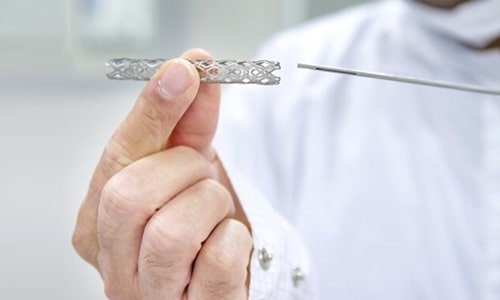
We provide numerous services for your medical journey, including:
We offer packages at reasonable pricing that include a variety of additional advantages, making it a better deal than paying for individual perks at the hospital. Angioplasty Surgery is required when a person has been diagnosed with blocked or narrowed coronary arteries. It is needed to clear the blockages and ensure restoration of normal blood flow through the vessels and arteries to the heart muscles. The procedure follows an insertion of a thin tube (a catheter) via incision in the leg or arm and guiding it to the heart. Two types of Angioplasties are there- Coronary and Balloon angioplasty. Therefore, the procedure is quite helpful to remove the obstruction or clotting., Consider this comprehensive & discounted package for Angioplasty surgery at Sharda Hospital, India.
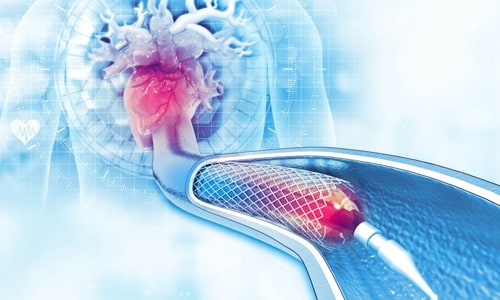
MediGence is offering immense facilities for your medical journey such as:
We offer packages at reasonable pricing that include a variety of additional advantages, making it a better deal than paying for individual perks at the hospital. Angioplasty Surgery is required when a person has been diagnosed with blocked or narrowed coronary arteries. It is needed to clear the blockages and ensure restoration of normal blood flow through the vessels and arteries to the heart muscles. The procedure follows an insertion of a thin tube (a catheter) via incision in the leg or arm and guiding it to the heart. Two types of Angioplasties are there- Coronary and Balloon angioplasty. Therefore, the procedure is quite helpful to remove the obstruction or clotting., Consider this comprehensive & discounted package for Angioplasty surgery at Pushpawati Singhania Research Institute, India.
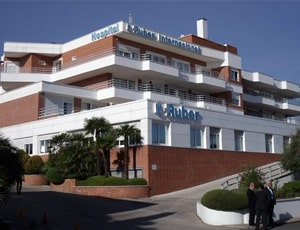
The Hospital has a wide architectural structure that consists of-

Apart from in-detail treatment procedures available, Centro Medico Teknon located in Barcelona, Spain has a wide variety of facilities available for International Patients. Some of the facilities which are provided by them are Accommodation, Airport Transfer, Choice of Meals, Interpreter, SIM, TV inside room. Also listed below are some of the most prominent infrastructural details:
With about 80,000 m 2 , it is equipped with the highest sanitary technology and offers a wide portfolio of services-

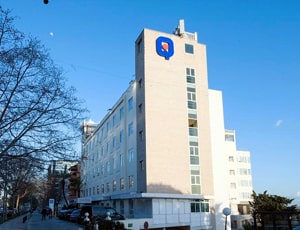
Apart from in-detail treatment procedures available, Quironsalud Marbella Hospital located in Marbella, Spain has a wide variety of facilities available for International Patients. Some of the facilities which are provided by them are Accommodation, Airport Transfer, Choice of Meals, Interpreter, SIM, TV inside room. Also listed below are some of the most prominent infrastructural details:
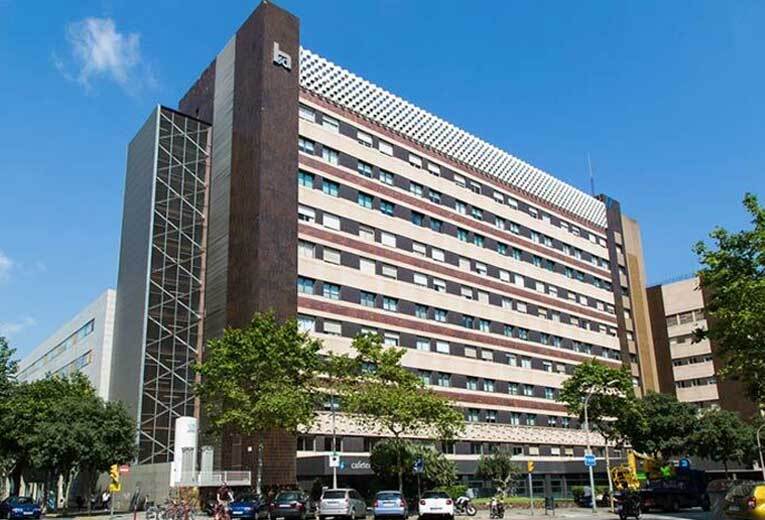
The Hospital is an amalgamation of a group of buildings located in the Eixample Left of Barcelona, ??between Paris, Viladomat, and London streets. It has a capacity of 350 adjustable beds and first-class hotel-like services inpatient rooms. Currently, it has a workforce of about 1100 Healthcare Professionals.
In order to treat patients with intensive care, the Hospital has 10 beds in its ICU for critically ill patients.
The Hospital has launched a few more things to improve customers’ services- 4 new Operating Rooms and a New Diagnostic Imaging Service.
Other Services
Types of Room
Double Rooms, Double Rooms for Individual Use, and Single Rooms; equipped with an easy-to-use electrical movement control system and a nursing call/warning system, located at the head of the bed, a sofa-bed for the companion, and a bathroom with a shower. They are also equipped with television and telephone.
A cafeteria/Restaurant is also available for the patients or visitors.
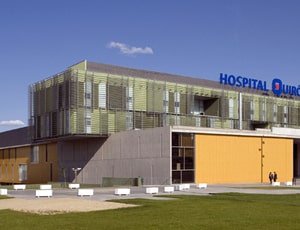
Apart from in-detail treatment procedures available, University Hospital Quironsalud Madrid located in Madrid, Spain has a wide variety of facilities available for International Patients. Some of the facilities which are provided by them are Accommodation, Airport Transfer, Choice of Meals, Interpreter, SIM, TV inside room. Also listed below are some of the most prominent infrastructural details:
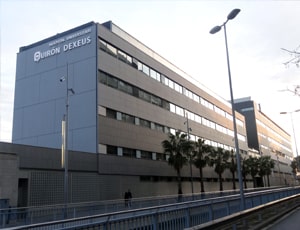
Apart from in-detail treatment procedures available, Dexeus University Hospital located in Barcelona, Spain has a wide variety of facilities available for International Patients. Some of the facilities which are provided by them are Accommodation, Airport Transfer, Choice of Meals, Interpreter, SIM, TV inside room. Also listed below are some of the most prominent infrastructural details:

Quironsalud Torrevieja Hospital located in Torrevieja (Alicante), Spain is accredited by ISO. Also listed below are some of the most prominent infrastructural details:
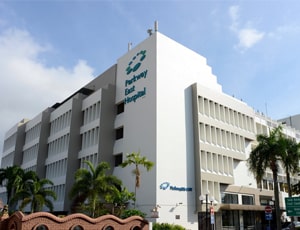
Parkway East Hospital located in Joo Chiat Pl, Singapore is accredited by JCI. Also listed below are some of the most prominent infrastructural details:
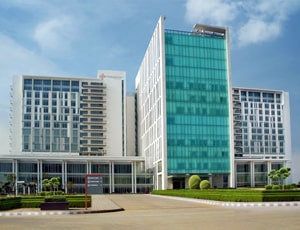
Types of Angioplasty in Medanta - The Medicity and its associated cost
| Treatment Option | Approximate Cost Range (USD) | Approximate Cost Range (INR) |
|---|---|---|
| Angioplasty (Overall) | 2846 - 6825 | 227416 - 551175 |
| Coronary Angioplasty (PCI) | 4093 - 6861 | 336465 - 560520 |
| Peripheral Angioplasty | 3344 - 5542 | 280602 - 465751 |
| Balloon Angioplasty | 2817 - 4481 | 231626 - 365514 |
DOCTORS IN 14 SPECIALITIES
FACILITIES & AMENITIES
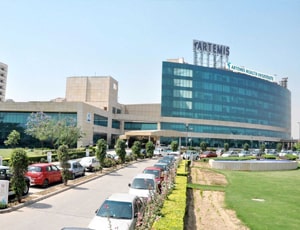
Types of Angioplasty in Artemis Health Institute and its associated cost
| Treatment Option | Approximate Cost Range (USD) | Approximate Cost Range (INR) |
|---|---|---|
| Angioplasty (Overall) | 2823 - 6697 | 233538 - 555972 |
| Coronary Angioplasty (PCI) | 3961 - 6739 | 328117 - 551406 |
| Peripheral Angioplasty | 3349 - 5684 | 271091 - 462483 |
| Balloon Angioplasty | 2843 - 4510 | 232968 - 365746 |
DOCTORS IN 15 SPECIALITIES
FACILITIES & AMENITIES
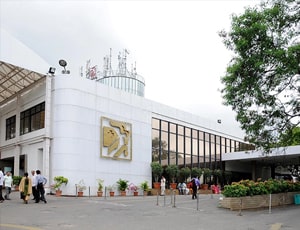
Types of Angioplasty in Apollo Hospitals and its associated cost
| Treatment Option | Approximate Cost Range (USD) | Approximate Cost Range (INR) |
|---|---|---|
| Angioplasty (Overall) | 2809 - 6707 | 234977 - 556673 |
| Coronary Angioplasty (PCI) | 4038 - 6862 | 325439 - 561515 |
| Peripheral Angioplasty | 3394 - 5707 | 275628 - 458912 |
| Balloon Angioplasty | 2785 - 4445 | 232806 - 364115 |
DOCTORS IN 14 SPECIALITIES
FACILITIES & AMENITIES
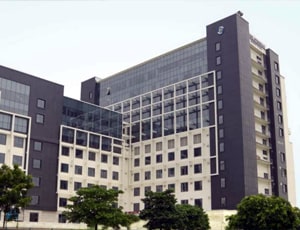
Types of Angioplasty in Venkateshwar Hospital and its associated cost
| Treatment Option | Approximate Cost Range (USD) | Approximate Cost Range (INR) |
|---|---|---|
| Angioplasty (Overall) | 2550 - 6113 | 208614 - 497880 |
| Coronary Angioplasty (PCI) | 3641 - 6077 | 300040 - 500366 |
| Peripheral Angioplasty | 3047 - 5057 | 250332 - 417474 |
| Balloon Angioplasty | 2534 - 4055 | 207905 - 332715 |
DOCTORS IN 13 SPECIALITIES
FACILITIES & AMENITIES
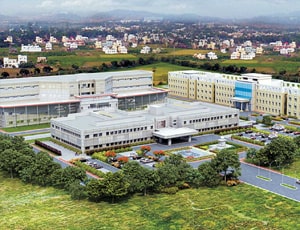
Types of Angioplasty in Global Health City and its associated cost
| Treatment Option | Approximate Cost Range (USD) | Approximate Cost Range (INR) |
|---|---|---|
| Angioplasty (Overall) | 2753 - 6745 | 232671 - 544516 |
| Coronary Angioplasty (PCI) | 4044 - 6642 | 336523 - 560469 |
| Peripheral Angioplasty | 3315 - 5635 | 275082 - 471475 |
| Balloon Angioplasty | 2823 - 4440 | 231582 - 362692 |
DOCTORS IN 14 SPECIALITIES
FACILITIES & AMENITIES
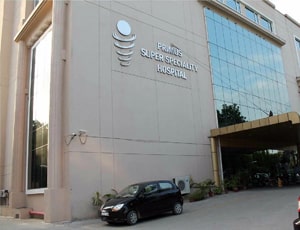
Types of Angioplasty in Primus Super Speciality Hospital and its associated cost
| Treatment Option | Approximate Cost Range (USD) | Approximate Cost Range (INR) |
|---|---|---|
| Angioplasty (Overall) | 2549 - 6100 | 208919 - 499214 |
| Coronary Angioplasty (PCI) | 3647 - 6063 | 298940 - 497303 |
| Peripheral Angioplasty | 3031 - 5089 | 248519 - 414829 |
| Balloon Angioplasty | 2528 - 4066 | 208720 - 333622 |
DOCTORS IN 13 SPECIALITIES
FACILITIES & AMENITIES
Coronary artery disease (CAD) is one of the most common heart diseases reported across the world. It results due to blood clot formation and plaque accumulation in the major blood vessels of the heart.
Balloon angioplasty is the most common endovascular procedure (procedure performed inside the blood vessel) carried out to treat coronary artery disease. In this procedure, the blood clots in the major arteries of the heart are detected and cleared by inserting a catheter into an artery of the hand (radial artery) or leg (femoral artery). This catheter consists of a balloon at its tip, which dislodges the clot to the periphery of the blood vessel after inflation.
Angioplasty may or may not be followed by coronary stent placement, depending on the angiography findings. This procedure is performed in patients with fewer blood clots in the vessels and those who do not respond to medications. It may also be carried out as an emergency procedure to treat a heart attack.
Step 1: Placing the patient on oral sedatives
Step 2: Administration of general anaesthesia
Step 3: Incision at the femoral artery or radial artery
Step 4: Insertion of catheter into the artery through an incision
Step 5: Guiding the catheter up to the base of the coronary artery
Step 6: Insertion of a guidewire from within the catheter into the artery up to the site of the blood clot
Step 7: Insertion of contrast dye through the catheter
Step 8: Checking for the blocks through a radiograph
Step 9: Identifying the pinpoint location of the blood clot
Step 10: Passage of guide wire through catheter just beyond the region of clot
Step 11: Inflating and deflating the balloon till normal blood flow is obtained from the vessel
Step 12: Stabilizing the stent in place
Step 13: Retrieving the catheter
Contraindications: You may not be suggested to undergo balloon angioplasty if the access vessel (femoral or radial artery) is of insufficient size and quality.
Recovery time: You will be discharged from the hospital in one day. But you should avoid strenuous activities for one month after being discharged from the hospital.
Prognosis: According to research, 79 percent of the people who receive the stent after a balloon angioplasty are relieved from angina for up to 5 years.
Ask your healthcare adviser for the best multiple options and choose the one that meets your expectations
The cost of Angioplasty procedure starts from USD 19500 in Spain. Many multispeciality hospitals in Spain that are JCI, OHSAS certified are approved and most sought after for treating international patients with Angioplasty
Angioplasty cost in Spain varies from one hospital to the other. The Angioplasty package cost usually includes all the expenses related to pre and post surgery expenses of the patient. Typically, the package cost of Angioplasty in Spain includes the expenses related to the surgeon's fee, anesthesia, hospital, meals, nursing and ICU stay. Extended hospital stay, complications after the surgery or new diagnosis may affect the overall cost of Angioplasty in Spain.
Angioplasty in Spain is offered by multiple hospitals across the country. For quick reference, the following are some of the leading hospitals for Angioplasty in Spain:
While the speed of recovery may vary from patient to patient, they are still required to stay for about 18 days after discharge. This is important to ensure that the surgery was successful. During this time, control and follow-up tests take place to check for medical fitness.
There are certain expenses additional to the Angioplasty cost that the patient may have to pay for. These are the chanrges for daily meals and hotel stay outside the hospital. The per day extra expenses in Spain per person are about USD 50 per person.
There are many cities that offer Angioplasty in Spain, including the following:
There are many Angioplasty surgeons who offer video telemedicine consultation to patients who need this treatment. Some of them include the following:
| Doctor | Cost | Schedule Your Appointment |
|---|---|---|
| Dr. Juli Carballo | USD 833 | Schedule Now |
| Dr. Antonio Berruezo | USD 833 | Schedule Now |
| Dr. Xavier Ruyra Baliarda | USD 833 | Schedule Now |
| Dr. Josep Brugada | USD 833 | Schedule Now |
| Dr. Raul F Abella | USD 606 | Schedule Now |
The patient is supposed to stay at the hospital for about 2 days after Angioplasty for monitoring and care. This phase is important to ensure that the patient is recovering well and is clinically stable. During this time, several tests are performed before the patient is deemed suitable for discharge.
There are more than 7 hospitals that offer Angioplasty in Spain. The above listed clinics are approved to perform the surgery and have proper infrastructure to handle Angioplasty patients. Also, these hospitals follow the necessary guidelines as required by the medical associations for the treatment of Angioplasty patients.